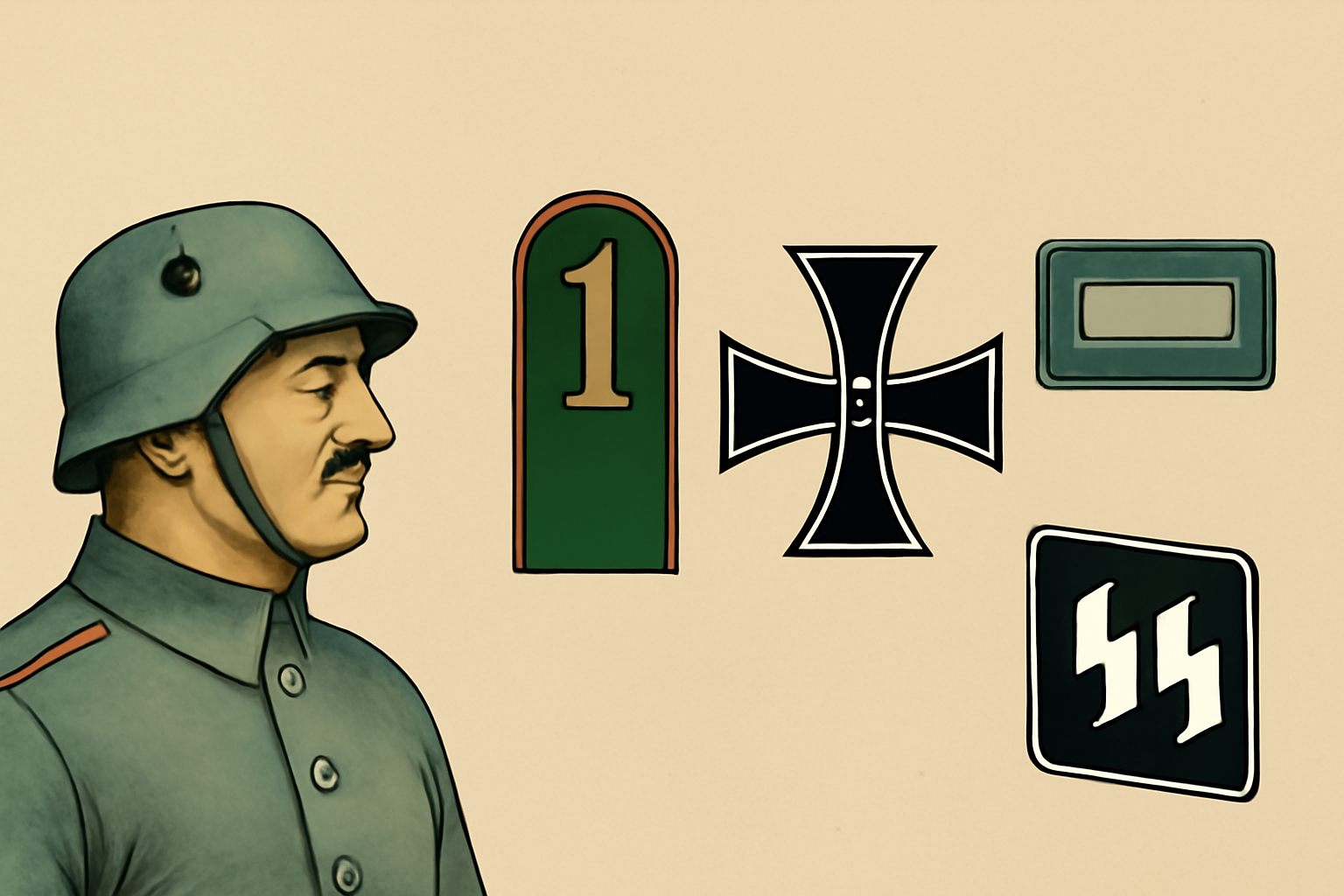
German WWI Uniform Insignia Explained: History, Ranks & Symbols
Published on May 22, 2025
German WWI Uniform Insignia Explained: History, Ranks & Symbols
When it comes to military history, uniforms and insignia tell a vivid story of identity, hierarchy, and honor. The German military, particularly during World War I, showcased an intricate system of uniform insignia that reflected rank, regiment, and role. Understanding German WWI uniform insignia is essential for historians, collectors, and enthusiasts alike. This article delves into the origins, meanings, and evolution of these symbols, while linking them to related concepts like German army WWII ranks, Third Reich military ranks, and the infamous SS collar insignia.
The Role of Insignia in the German Army of WWI
In the German Imperial Army (Deutsches Heer) during WWI, insignia served practical and ceremonial purposes. They identified rank, unit, and specialty, helping maintain order and command structure in complex battlefields. Each element on the uniform—from shoulder straps to collar tabs—carried significance.
The pillar page “German army insignia” sheds light on these elements, but here we focus specifically on the WWI period and its transition to the WWII era, marked by the rise of the Third Reich.
Overview of German WWI Uniform Insignia
The German WWI uniform insignia mainly consisted of:
- Shoulder Straps and Boards: Denoting rank and regiment. Officers had more elaborate designs, often including silver or gold piping.
- Collar Tabs: Indicated branch of service or unit, such as infantry, cavalry, or artillery.
- Sleeve and Chest Badges: Included awards like the Iron Cross or wound badges.
- Helmet Decals and Badges: Different from WWII helmets, but still used to distinguish units.
German Army Ranks During WWI
Ranks were displayed prominently on the uniform through insignia, often embroidered or metal pins. Here’s a brief hierarchy:
- Enlisted Men (Mannschaften): Simple shoulder straps with color-coded piping.
- Non-Commissioned Officers (Unteroffiziere): Added chevrons or bars on shoulder straps.
- Officers (Offiziere): Ornate shoulder boards with silver cords and pips (stars).
- General Officers: More elaborate boards with gold cords and star insignia.
This rank structure evolved but remained influential in WWII, where the German army WWII ranks system adapted and expanded with new insignia.
The Iron Cross – A Symbol Across Two Wars
One of the most iconic decorations tied to German military uniforms is the Iron Cross, first awarded during the Napoleonic Wars but famously renewed in WWI and again in 1939 during WWII.
- 1939 Iron Cross: The Nazi regime revived this medal, adding a swastika in the center. It became one of the most recognized symbols of German military valor.
- WWI versions of the Iron Cross lacked this symbol but shared the same cross design.
If you explore the subpage on 1939 Iron Cross, you’ll learn about its symbolism, ranks, and variations (1st class, 2nd class, Knight’s Cross).
Transition to Third Reich Military Ranks and Insignia
After WWI, the Treaty of Versailles severely restricted Germany’s military. But the rise of the Third Reich led to rapid militarization and changes in uniform insignia, which reflected new political and military realities.
The pillar page “Third Reich military ranks” covers the WWII era ranks and symbols extensively. The Wehrmacht (German Armed Forces) introduced:
- New rank titles and insignia designs.
- More elaborate collar tabs and shoulder boards.
- Distinctive branch colors and unit badges.
SS Collar Tabs and Insignia
The SS (Schutzstaffel), a paramilitary organization under the Nazi Party, had their own unique uniform insignia, particularly the SS collar tabs. These were critical for identifying rank and unit within the SS.
- The SS collar insignia featured runic symbols, rank pips, and unit numbers.
- Designs differed significantly from the regular army, emphasizing the SS’s elite and political status.
Your website’s subpage on SS collar tabs offers an in-depth look at these distinctive and controversial insignia.
German Afrika Korps Insignia
The German Afrika Korps (DAK), led by General Erwin Rommel during WWII, had unique insignia reflecting their desert campaign environment.
- Their uniforms were lighter-colored, and badges included specific DAK patches.
- The insignia often combined traditional Wehrmacht symbols with distinctive desert camouflage elements.
This niche area, covered on your subpage on German Afrika Korps insignia, fascinates collectors and historians.
Why Understanding German WWI Uniform Insignia Matters Today
For collectors and reenactors, knowing the precise details of German WWI uniform insignia ensures authenticity and respect for historical accuracy. For history buffs and academics, these insignia offer clues about military hierarchy, unit organization, and broader social history.
Moreover, many WWII German insignia evolved directly from WWI designs, making this knowledge foundational for studying the entire period.
How to Identify Authentic German WWI Insignia
If you’re hunting for authentic pieces or studying uniforms, consider these tips:
- Material and Craftsmanship: WWI insignia were often hand-stitched, with natural fibers.
- Design Details: Look for specific regiment colors, rank markers, and award badges.
- Historical Context: Match insignia style with the period and branch of service.
Beware of reproductions, especially those mixing WWI and WWII elements inaccurately.
Conclusion
Exploring related topics like Third Reich military ranks, SS collar insignia, and specialized units like the Afrika Korps broadens understanding of German military history. For enthusiasts of war uniforms and history, these insignia are windows into the past, revealing the complexity and evolution of military identity.
For more detailed guides on specific insignia and ranks, visit the pillar and subpages on German army insignia, Third Reich military ranks, 1939 Iron Cross, German Afrika Korps insignia, and SS collar tabs on paddelaters.com.
